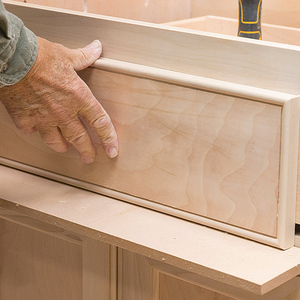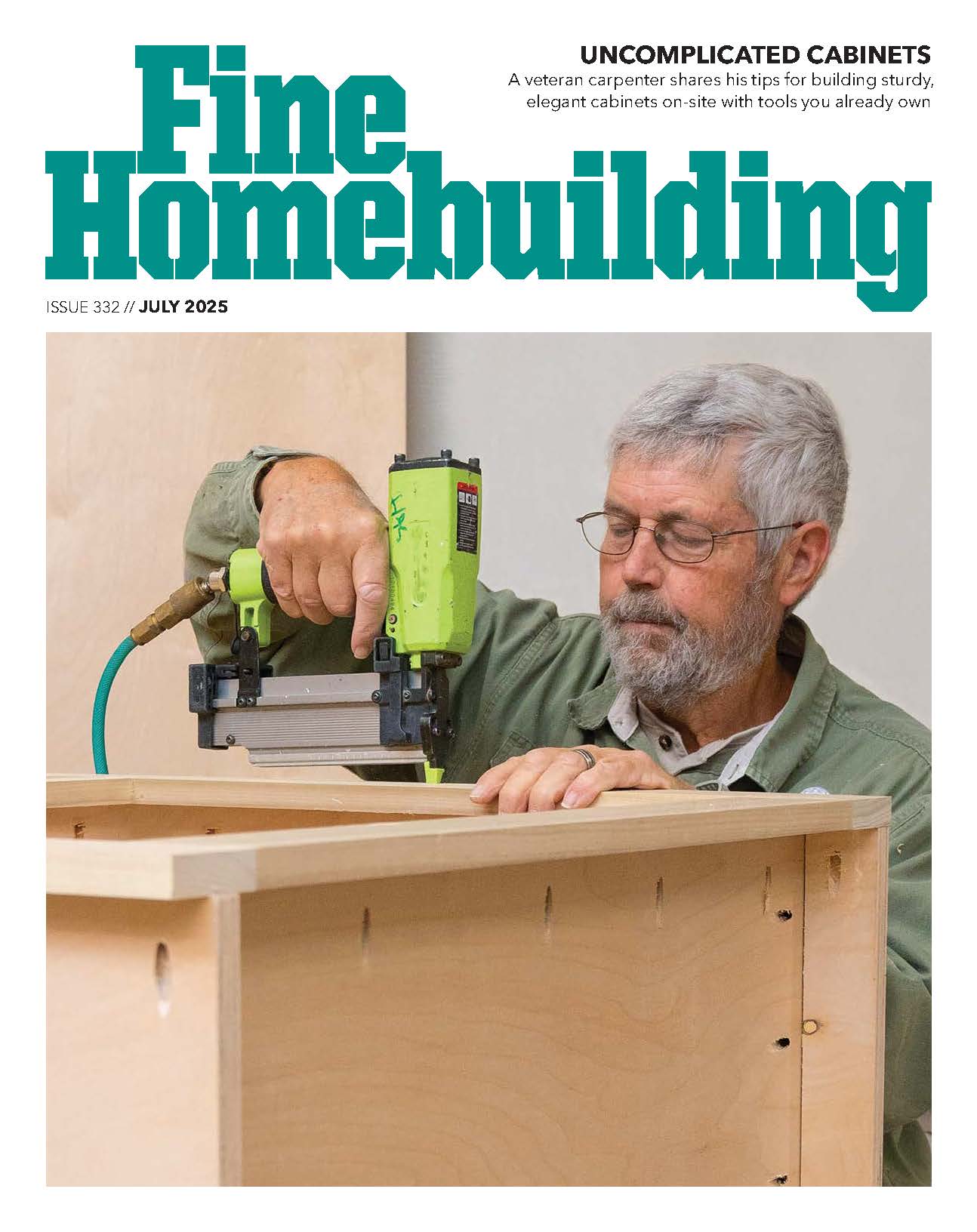Greetings, All:
I’m a homeowner doing a long-term remodel of my 60-year-old house in southern NH, and trying to increase energy efficiency at every opportunity. I’m going to be re-siding this summer, and thinking about adding a skin of rigid foam as follows:
1. strip board-and-batten siding down to sheathing.
2. nail and/or glue 1-2 inches of rigid foam to sheathing, taping seams.
3. vertical 1×3 strapping, air-nailed through insulation and sheathing into studs.
4. fiber cement lap siding, nailed to strapping. I’ll be replacing windows and doors as I go (thinking of using Marvin’s Integrity line of fiberglass with wood interiors), and nailing those through the new strapping as well.
I’m trying to achieve a thermal break in the wall, added R-value (currently 2×4 walls with fiberglass), and air barrier. My concerns are (1) whether it is structurally sound to nail the strapping on through 2″ of foam, sheathing, and into studs (assuming I’ll actually catch the studs most of the time); (2) how much foam do I need to ensure that the interior surface of the foam doesn’t serve as a condensation surface for moisture-laden air from the interior? I think I’d be counting on the foam to minimize infiltration of moisture-laden air into the walls, but that seems like a bit of a gamble if any air that does find its way in deposits moisture on the foam.
Thanks for any thoughts you may offer.



















Replies
Keep in mind that as you increase the thickness of your siding layers you will need to extend (fur out) the depth of all your window and door jams in order to allow the trim to purtude out further than the siding. Personally, I would just wrap the sub-siding with 1/4" thick polystirene and be done with it.
There are a few outfits out East who specialize in this type of job, and I recall seeing an article about the techniques of one a few years ago. Alas, don't recall details, though, other than them being similar to what you describe.
Keep in mind, though, a couple of points:
1) In any standard frame home built prior to about 1980 air infiltration is a much bigger factor in heat loss than insulation, assuming that the home has the then-standard 3" of fiberglass in the walls.
Using a housewrap on the house and carefully sealing all seams and sealing around windows and doors will dramatically reduce heat loss and, perhaps even more importantly, uncomfortable drafts.
2) Anywhere where temps commonly dip below freezing, condensation is primarily a result of inside moisture working it's way outward. This is why you want any vapor barrier on the inside, not the outside.
Foam insulation (depending on specific type and installation techniques) can perform as a vapor barrier, potentially trapping moisture in the walls. To prevent this, you must either have an even better vapor barrier on the inside, or the temperature at the inside face of the foam needs to be above the dew point of exfiltrating air.
The other posting is correct and I think you understood this.
The problem w/ moisture is the moisture in the house getting into the wall cavity and condensing on the first solid cold surface it sees. Leaky houses are less of an issue, because they naturally ventilate themselves to control the RH at acceptable levels. If you tighten your house up through your project, you may need to ventilate more (i.e. use bath exhaust fans more often) to maintain acceptable levels of RH.
Even if it is pouring rain outside (100% RH), that moisture is generally not an issue as it drifts into the house, it warms up and the RH drops very quickly.
Put on as much foam as you can afford ... you will only do it once. 2 inches is much better than one.
You should take a look at the wall sections at the Building Science website in the "Houses that Work" section. The Boston one looks like what you are describing I think: http://www.buildingscience.com/housesthatwork/cold/boston.htm The website is well worth reading for any one interested in energy efficient design.
Thanks much to all who took the time to reply to my inquiry. You've got me thinking I might try nailing on nominal 2x vertical strapping through only one inch of rigid foam (to get good purchase into the studs behind), then fill in between the strapping with another layer of one inch foam (to increase the temperature of the interior foam face, thus reducing condensation potential), leaving the strapping 1/2 inch proud for a drainage/ventilation plane.
The link to Lstiburek's website was very helpful, thanks.
You might consider 2 inches of insulation and 1x siding nailing strips screwed through the insulation into the studs. They make roof insulation screws up to like 8 inches and more in length designed to secure roofing and roof sheathing down through rigid insulation into the roof structure.
Greetings gtremblay,
as a first time poster Welcome to Breaktime.
2 inches of foam with nominal 3/4 inch furring on top of what? 3/4 inch sheathing?
That would be 3 1/2 inches before you begin to penetrate a stud which you would want to assure that that would be the penetration point of each hand driven nail.
A lot of fiber cement siding weight to be hanging there.
Two storey building?
Quite an ambitious project.
Cheers and best to you.
sobriety is the root cause of dementia.
I just gotta wonder if all this is worth the trouble. The cost/benefit ratio may be out of whack. What a pain extending all the window and door openings to the new plane. Then you have all the siding issues mentioned. I think you would get most of the benefit for much less effort using a very thin layer of foam. Even then, you gotta be worried about moisture getting trapped in the stud cavities.
What about ripping out the fiberglass while you have the siding off, and filling the cavities with dense pack cellulose? Then put up siding with a conventional rain screen design. Better end result, IMO.
Also, keep in mind that most old houses lose the bulk of their heat convectively through the attic plane. This means that air sealing has a much better cost/benefit ratio than insulating.